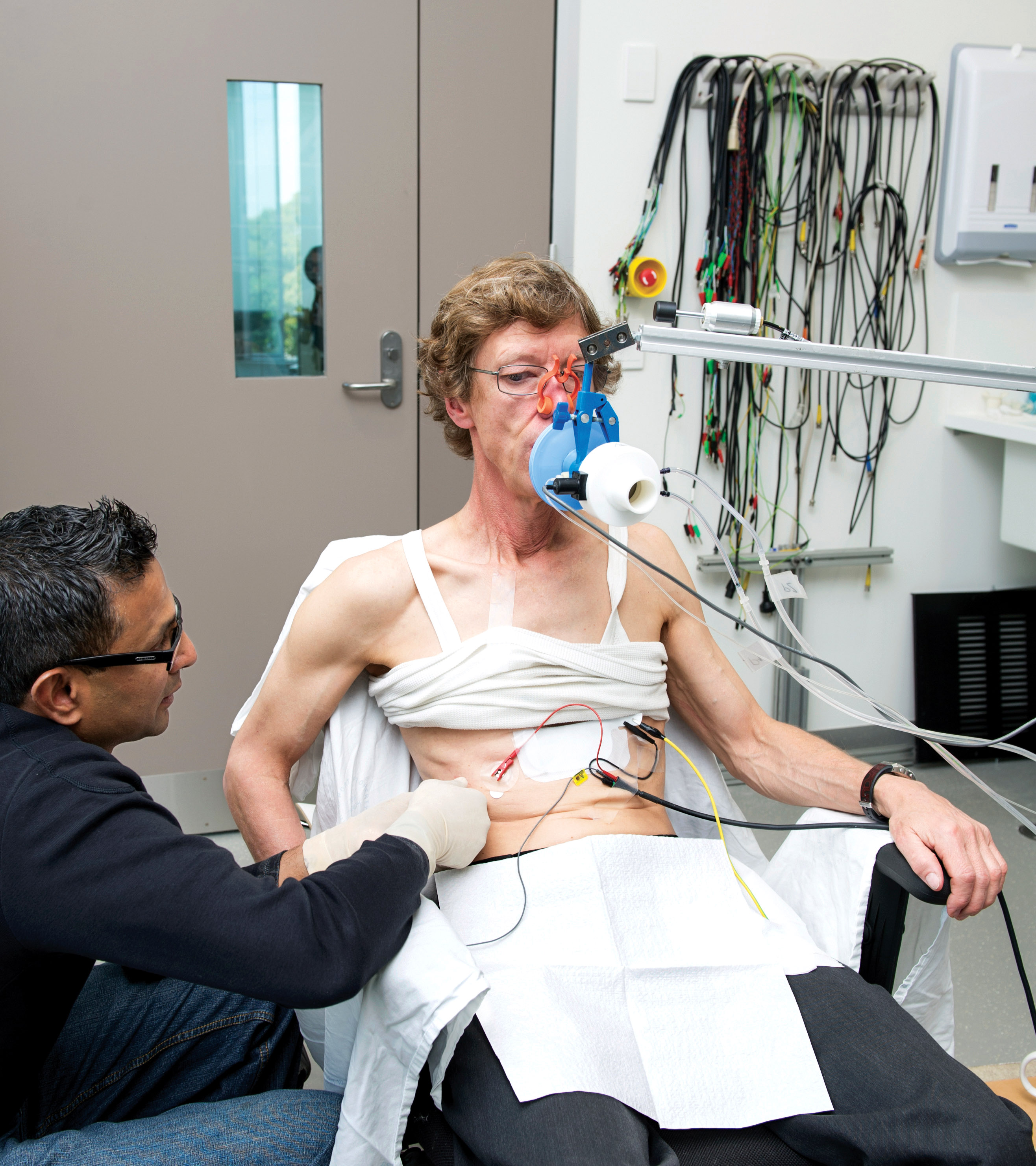Self-experiments: measuring breathlessness in SCI patients
Self-experiments have long been a part of science and medicine.
Over the years, self-experimenters have proven invaluable to the medical research community, and to the patients they are seeking to help.
Prof Simon Gandevia is well known for putting himself ‘under the microscope’ and is perfecting a measurement technique he and his team developed to measure breathlessness in people with spinal cord injury (SCI). Researchers are investigating dyspnoea, the sense of breathlessness, which is common after cervical SCI as a result of partial paralysis or muscle disuse.
People living with cervical SCI report dyspnoea as an important symptom. One of the causes is the increased effort, or neural drive, to breathe, due often to their partially paralysed breathing muscles. This can be tested by measurement of the neural drive to the diaphragm, the primary inspiratory muscle. It is assessed by measurement of the discharge of single motor units in the diaphragm.
These measurements can be made safely with an electrode inserted through the chest wall below the pleural reflection with the help of ultrasound imaging.
The laboratory at NeuRA is the only one in the world to use this technique – the most accurate method of assessing neural drive to breathe. Researchers will measure the discharge rates of diaphragm single motor units during quiet breathing before and after respiratory muscle exercise training in participants with chronic cervical SCI.
This project will provide the first direct measures of neural drive to the diaphragm in people with SCI and advances understanding of mechanisms underlying any changes in dyspnoea after respiratory muscle training.


